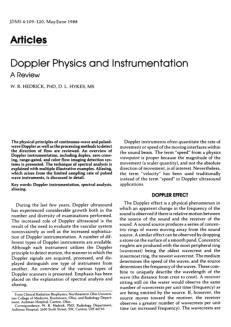Scientific papers 1986 - 1989







This document was published for a workshop held in
Tokyo on the 11 & 12 September of 1986.
Jean Pierre IMBERT is a specialist of equations and
decompression modeling who worked for COMEX as a
research engineer on deep heliox and hydreliox programs
such as hydra 10 in 1992, which is still, the deepest depth
reached in a chamber (701 metres).
He is the main designer of the air, gas, and saturation
tables MT92, which are still in force under the name MT
2019 (for this reason, we call this set MT 92-2019). He is
also the main author of the saturation procedures
NORMAM-15. He continues to run several research
programs on decompression models, High-Pressure
Nervous Syndrome (HPNS), and oxidative stress.

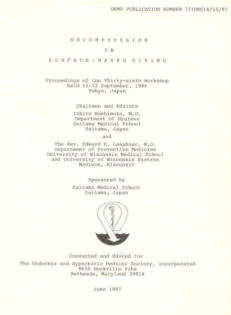

This document highlights the importance of a database in
the conception of new decompression models.
year of publication: 1988
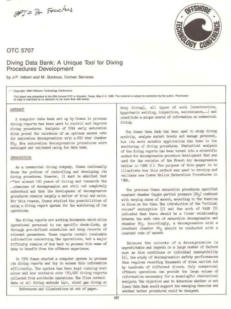

We do not use closed-circuit scuba for commercial diving.
However, this study refers to oxygen toxicity.
This document seems to have been written by Dr. Frank K.
Butler, an eminent member of the US Tactical Combat
Casualty Care, Joint Trauma System, and the
decompression sickness and arterial gas embolism
treatment committee for the Undersea and Hyperbaric
Medical Society.
Date of publication: March 1986

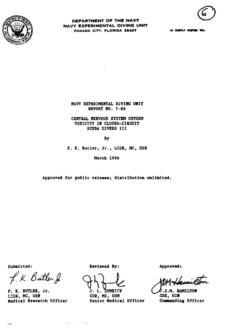

This document is another description of the Variable
Permeability Model also discussed in documents #1. #2,
#4, and #11.
This document was published in 1986


This report from the British journal of industrial medicine
describes investigations on lung function and the
response to exercise with seven diver/welders who took
part in a test saturation dive to 300 m for an average
duration of 12 days with nine days decompression.
Year of publication: 1987



Authors: Francis, Pezeshkpour, & Dutka:
A continuous air infusion (1.0 ml -min-') was delivered via
a fine aortic cannula into the arterial circulation of 7
anesthetized dogs until somatosensory evoked potentials
could elicit no spinal cord function. The animals were
then rapidly perfusion-fixed and the spinal cords removed
for histological examination.
Year of publication: 1989


This report describes the examination of the thermal
balance, physical performance, and cognitive function of
seven U.S. Navy divers who each performed two 7-hour
cold exposures while wearing a dry suit with M-400
Thinsulate insulation for thermal protection.
Date of publication: March 1989
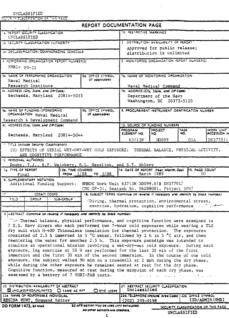

Authors: O. Hyldegaard, & J. Madsen
The use of heliox breathing during recompression in
serious cases of decompression sickness after air dives has
been recommended by James. The beneficial effect of
heliox breathing on N, bubbles in a lipid tissue such as the
white substance of the spinal cord was ascribed by Hills
and James to an outward flux of N; from bubbles
exceeding the inward flux of He, whether the exchange
ofgasses in the tissue is limited by perfusion or diffusion.
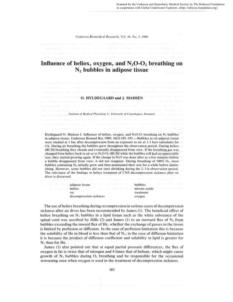

Authors: Andrea Harabin, D Homer, Paul K Weathersby,
and E T Flynn
This report reviewed the model which gave rise to the
UPTD. Included a summary of vital capacity data,
performed a summary of available vital capacity data, and
performed the model analysis.
The conclusions of the authors are similar to those of
doctor Wright.
Note that this document is not ideally copied and is
challenging to read for this reason.

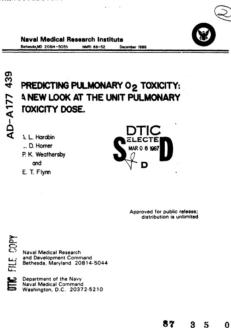

Predictive studies V was a US Navy research program on
oxygen tolerance investigated by the Institute For
Environmental Medicine staff. Such studies have led to
the requirement to search beyond pulmonary toxicity and
central nervous system convulsions and have resulted in
currently used procedures.



Author: R.W. Hamilton
The “Repex method” is an evolution of the UPTD concept
that allows doses to be calculated or tabulated the same
way using the same equation but calls the single dose
unit, “OTU or Oxygen Tolerance Unit”. This system was
developed as a means of dealing with daily hyperoxic
exposures over a mission duration of several days or
longer, and was adopted later by NOAA
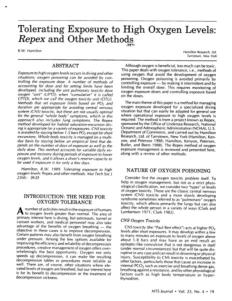

This workshop, carried out at the Undersea and
Hyperbaric Medical Society headquarters on the 13 &14
February 1987, was part of a broad program of technical
grants, contracts, and seminars to provide information for
the National Oceanic and Atmospheric Administration
(NOAA) Undersea Research Program and the U.S.
Department of Commerce (NURP) activities. Based on this
aim, it grouped 35 experts regarding diving
decompression procedures to address how to move
tables forward through the various developmental and
validation steps.
This document contains only the consensus issued at the
end of the workshop

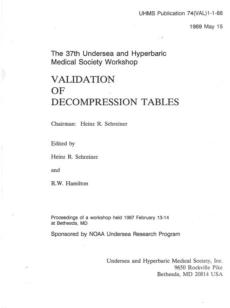

This document analyzes the scientific, regulatory,
economic, legal, and ethical considerations involved in
alternative technologies in biomedical and behavioral
research,toxicity testing, and education. Included is a
detailed examination of the USA's institutional regulation
of animal use, and a review of developments in 10 other
countries.

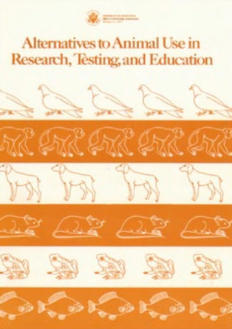

Author: Peter Edel
This study attempts to define the state-of-the-art for the use
of hydrogen-oxygen mixtures for diving operations by
compiling information related to past and current research
efforts in the USA and other countries. This information
was used to indicate possible areas of application for this
mixture under appropriate conditions and to define areas
in which hydrogen-oxygen mixtures could offer
physiological advantages not possible with currently used
breathing mixtures.

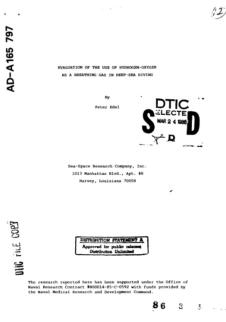

Authors: Z. Torok
Historically, physiological diving research was started in
response to the unacceptable incidence of decompression
sickness in early construction work where diving was
essential. Significant improvements have been made
regarding this aspect of diving.
In a somewhat analogous process, compression profiles
have been designed to reduce the incidence of high-
pressure nervous syndrome (HPNS). This paper focuses on
this aspect of the dive.
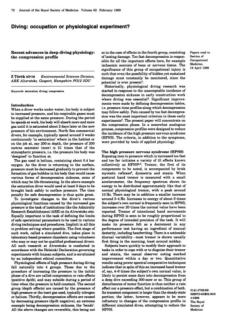

Publisher: American academy of underwater sciences)
This workshop was partly sponsored by the (US) National
Oceanic and Atmospheric Administration (NOAA),
Department of Commerce, through the Office of
Undersea Research, and in part by the Diving Equipment
Manufacturers Association (DEMA), and in part by the
American Academy of Underwater Sciences (AAUS).
The papers and discussions reflect some differences of
opinion about the options available to the diver when
ascending from a dive. The message from these experts is,
however, that there is a risk associated with ascending to
the surface following a dive that can be minimized by
exercing control to make stops and with ascent rates not
over 60 feet per minute.


Authors: Q. S. Lillo, & M. E. MacCallum
This investigation was performed to determine whether
inert gas sequencing at depth would affect
decompression outcomes in rats via the phenomenon of
counterdiffusion.
Rats were subjected to simulated dives using air and mixes
of 79% Helium/21% oxygen or 79% Argon/21% oxygen
in depths from 125 to 175 feet
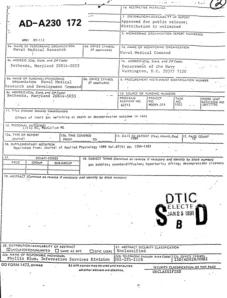

This document, presented at the UMS workshop on
validation of decompression schedules in Bethesda,
Maryland, USA, in February 1987, explains the process
used to design the MT92 decompression tables that are
still among the safest decompression procedures currently
used even though they were published 30 years ago.
This efficient process is still current and has been
reproduced by other scientific teams.

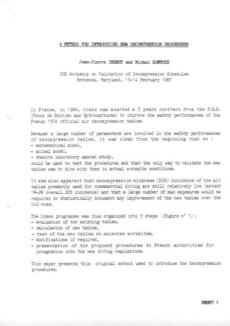

This is the complete version of the document above that,
in addition to the final consensus, provides the
proceedings of the UHMS workshop held on February 13-
14, 1987, in Bethesda, MD, USA, and 25 presentations
made by some of the participants in support of and
introduction to the workshop.
Note that this document is essential for the
comprehension on how a diving table is designed.

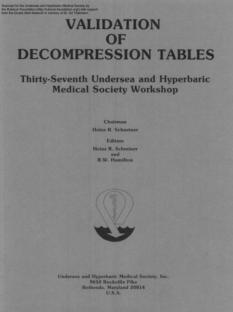

Author: Yu-Chong Lin
Human ability to stay in and under water is severely
limited because of physiological constraints that limit their
breath-hold time, diving depth, and ability to conserve
body heat. This document proposes an understanding of
these limitations to enhance the safety and enjoyment of
sport diving.
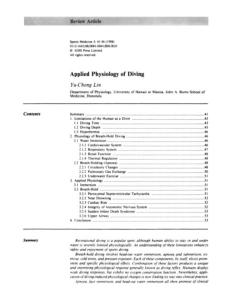


Click on the octopus
to return to the top
of the page

Authors: E.C. Parker, S.S. Survanshi, P.B. Massell, & P.K.
Weathersby
Previous probabilistic models accurately predicted DCS risk
in N2-O2 dives but failed in high PO2 decompression
dives.New models were proposed and tested with 1,013
O2 dives that showed significant improvement by
adjusting inert gas kinetics for PO2 (model 1) and
including PO2 in total inert gas calculations (model 2).
These modifications cover 90% of observed cases of DCS
in O2 dives.
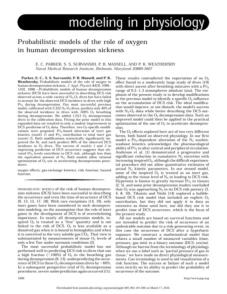

Authors: SR Muza, AJ Young, MN Sawka, IE Bogart, KB
Pandolf
This document describes the effects of cold acclimation
(CA) on the cardiorespiratory responses to cold air and
water stress tests (CST) that were studied in 7 divers.
The collected data indicate that CA attenuated the onset
of metabolic heat production during CST in air but did not
alter its ultimate magnitude or the relationships between
the cardiorespiratory variables and metabolic
requirements. Additionally, the thermoregulatory
adjustments associated with CA changed blood pressure
regulation during acute cold stress.
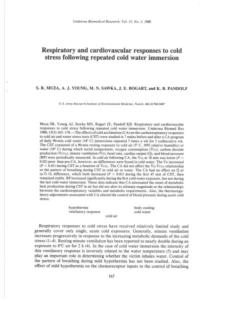

Authors: P. Tikuisis, R.Y. Nishi, P.K. Weatherby
The study compared two mathematical models for
predicting decompression sickness (DCS): the Nonlinear
Series Compartments (NLSC) model, which includes four
compartments arranged in series, and the
Monoexponential Parallel Compartments (MEPC) model,
previously utilized by Weathersby et al., featuring two
parallel compartments.The maximum likelihood method
was applied to optimize the parameters of these models,
enhancing the understanding of the risks associated with
various diving profiles.
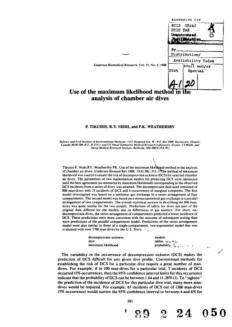



Authors: F.K. Butler
This US Navy document, published in 1986, details
experiments undertaken to investigate the possibility of
making multiple downward excursions from 20 FSW and
to establish the minimum time at 20 FSW or shallower
necessary to allow these additional downward excursions
to be made without an increased risk of Central Nervous
System (CNS) oxygen toxicity

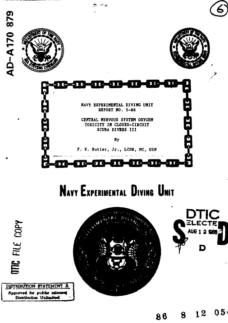

Authors: COMEX SA
By 1983, divers regularly operated at 200-300 meters, with
notable work in Brazil at depths up to 307 meters.
However, the possibility of operating at even greater
depths of 300-450 meters was thought, necessitating
physiological research into hyperbaric conditions. To push
beyond the depth limits of breathing mixes, COMEX
scientists explored using hydrogen to reduce HPNS and
improve lung ventilation, enhancing diver safety and
comfort without increasing costs.

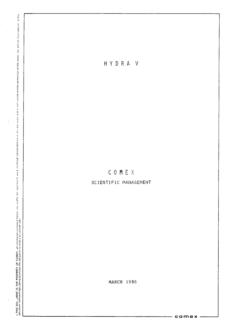

Authors: Micheal Tipton, Frank Golden
This study aimed to complement previous experiments by
other teams examining the reflex responses to cold, water
immersion, and protection from such responses using
naked or fully clothed subjects, as none of these studies
have looked at the importance of different body surface
areas in the initiation of the ‘cold shock’ responses.
To investigate this point, twelve healthy male subjects
underwent three 10-minute head-out immersions in 10°C
water with the torso and limbs exposed, or the torso
protected and the limbs exposed, or the limbs protected
and the torso exposed.
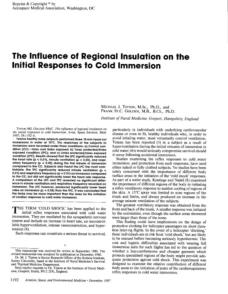

Authors: C. Gortanand, H.G.Delauze
The HYDRA 5 experimental dive was conducted in May
and June 1985 at the COMEX Research Center, where six
divers lived at a simulated depth of 450 meters in a
hyperbaric atmosphere composed of hydrogen, helium,
and oxygen. The purpose of this experiment was to try
hydreliox mixes that contrarily to helium mixes that are
limited by High Pressure Nervous Syndrome (HPNS) and
impaired pulmonary ventilation due to gas density,
extended these limits due to its narcotic properties, which
counteract HPNS, and its light molecular mass. This
experimental dive was successful, with all equipment and
techniques proving satisfactory. Biomedically, the use of
hydrogen showed significant improvements over heliox,
with no HPNS and easier breathing.

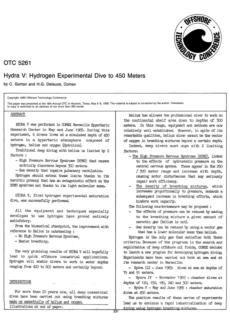

Authors: B.C. Eatock, R.Y. Nishi
This document provides guidelines for using Doppler
ultrasonic detection to monitor intravascular bubbles, a
common procedure in decompression research. It covers
the selection of monitoring sites and describes the two
observation scenarios: rest and movement.
Recommendations for scheduling observations and tips
for making high-quality, well-documented tape recordings
of Doppler signals are included. The document explains
the K-M Code for describing results and suggests what
information should be recorded. It also discusses some
challenges in interpreting the signals.

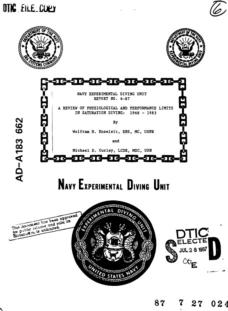

Authors: Wolfram H. Enseleit, Michael D. Curley
This paper is a review of literature on the physiological and
performance limitations in saturation diving, focusing on
the experiences of several countries between 1968 and
1983. It highlights the changes and impairments in various
bodily systems, particularly emphasizing the neurological
and neuropsychological challenges that determine the
limits of human capability in hyperbaric environments.

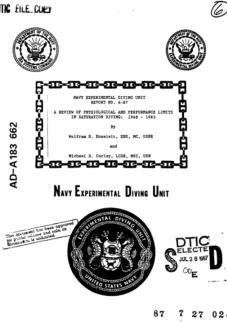

Authors: Shi Zhangyan, Zhao Deming, Mei Xiuhua, Liu
Zeren, and Sheng Tonme
This scientific study investigates the changes in human
EEG (electroencephalogram) patterns during simulated
saturation diving at various depths using different gas
mixtures. The study aims to identify the effects of high-
pressure environments, particularly focusing on the impact
of nitrogen narcosis and carbon dioxide retention on EEG
changes. It also explores the temporary and reversible
nature of these changes and the potential for photic
stimulation to temporarily improve EEG patterns.

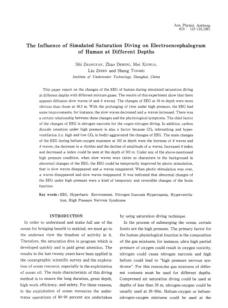

Authors: M. J. Vincent and M. J. Tipton
This study investigated the effects of cold water immersion
on maximal voluntary grip strength (MVGS) in male
volunteers. The examination included how MVGS was
affected by immersing the hand or forearm in cold water
and the additional impact of wearing a protective glove.
The results indicate significant reductions in MVGS due to
cold exposure and highlight the importance of hand and
forearm protection to maintain grip strength.
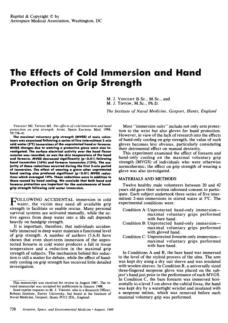

COMEX Hydra VIII refers to a significant deep-sea diving
project conducted by COMEX (Compagnie Maritime
d'Expertises) in 1988. This project involved dives to depths
of up to 534 meters (1,752 feet) using hydreliox
(He+H2+O2), setting a record for the deepest open-sea
saturation dive at that time. The operation was conducted
over several weeks, with divers undergoing extensive
preparation and training prior to the mission. The success
of this operation contributed significantly to advancements
in deep-sea diving technology and techniques, in addition
to the reputation of COMEX company.


Authors: Shin-ichi Wada, Akira Yokota, Shigeaki Matsuoka,
Chitoshi Kadoya, and Motohiko Mohri
The report discusses a scientific study conducted to assess
the effects of hyperbaric chamber dives at 19 ATA with
helium-oxygen on brain function in professional divers.
The study involved recording auditory middle latency
responses (MLRs) and short latency somatosensory evoked
potentials (SSEPs) to evaluate cerebral function during
simulated underwater experiments. The findings suggest
that the hyperbaric environment at 180 meters below sea
level can cause transient cerebral dysfunctions, particularly
between the brainstem and the cortex.


Authors: Michael J. Tipton, Michael J. Vincent
The authors of this study assessed the effectiveness of
different types of immersion suits in providing protection
against the initial physiological responses to cold water
immersion. They compared the protective capabilities of a
dry immersion suit, a wet immersion suit, and a cotton
overall, concluding that the dry suit offers significantly
better protection. They also suggest that immersion suit
design and testing should take into account all
physiological responses to cold water immersion, not just
the decrease in core temperature.
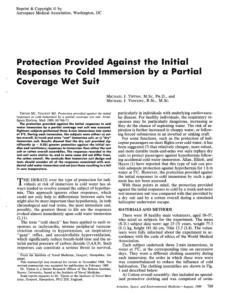

Author: W Sterk
RN standard air table ll, part of the "Guidelines for safe
diving" publication P78, has been the Netherlands' official
decompression table since 1967. In the 1970s, it was
found unsafe for commercial diving. Therefore, safe
decompression schedules for long dives were created
with Vriens Diving Company. This led to the SV
(SterkVriens) tables in 1980.


09 - “SOX” Surface decompression Tables in the Eastern Scheldt
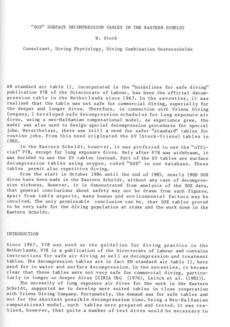

Authors: Imbert JP, Gortan C, Fructus X, Ciesielski T &
Gardette B
Thin-layer chromatography has identified phospholipids
from canine synovial fluid, with phosphatidylcholine (PC)
being the main component at 45%. These extracts reduce
water's surface tension and adsorb onto hydrophilic solids,
making them hydrophobic. The adsorbed layers work well
as lubricants, cutting down friction by up to 97% for
extracts and 99% for PC. Surface-active phospholipids may
aid in joint lubrication and could help in artificial
lubrication for arthritis patients.


15 - Hydra VIII: Pre-commercial Hydrogen Diving Project. In SUT
Subtech, pp. SUT-AUTOE-v14-107. SUT

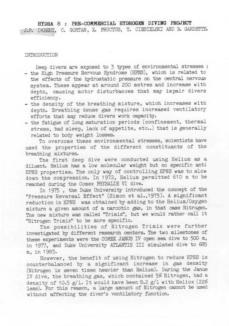

Authors: B.A Hills, & B.D. Butler
Oxygen is essential for energy production in cells,
requiring a constant supply to function properly. In
mammals, oxygen is taken from the air in the lungs and
transported via the bloodstream to tissues, primarily used
within mitochondria. This process raises many questions
about how oxygen is moved along its pathway. Is it
mainly through convection, or do diffusion and chemical
kinetics play significant roles? How do various membranes
affect transport? What mechanisms operate inside cells,
and does active transport contribute? Where does
oxygen exchange happen in the circulatory system?
Current knowledge is incomplete, indicating a need for
further understanding of oxygen transport mechanisms to
regulate blood flow effectively.


33 - Surfactants identified in synovial fluid and their ability to act as
boundary lubricants.

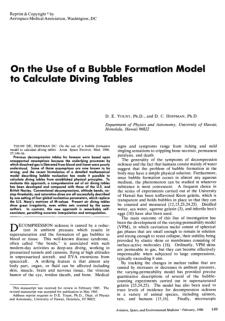

Authors: Ran Arieli, Fred Wiene
Inspired gas is not evenly spread in the lungs, and the
single-breath N2 washout is a common method to study
this. Recent studies have used computer models to
explore gas distribution. Another method to explain
alveolar plateau changes is through sequential emptying
based on varying pressure-volume relations. A lung
model is described to study how different pressure-
volume properties affect the single-breath N2 test.


05 - Alveolar plateau caused by P-V heterogeneity and hardiogenic
oscillations generated by differential effect of the heart - A model
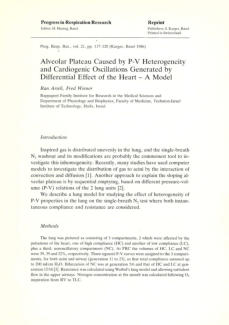
Author: R.W Hamilton
This position paper discusses the development of
decompression tables and procedures based on decades
of experience. The author shares both successful and
unsuccessful cases, leading to their opinions on how
decompression procedures should be developed safely
and ethically. They propose that new procedures should
be tested in controlled environments with skilled crews
and expert supervision, with results recorded for potential
revisions, emphasizing that no decompression table
should be considered final.


18 - A developer’s view of new decompression procedure
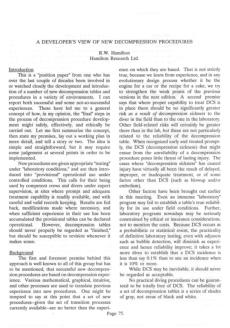

Author: W.R. Hedrick & D.L. Hykes
This document reviews the principles of continuous-
wave and pulsed-wave Doppler, methods to detect flow
direction, Doppler instrumentation, and explains spectral
analysis with examples, including aliasing issues.


24 - Doppler Physics and lnstrumentation
